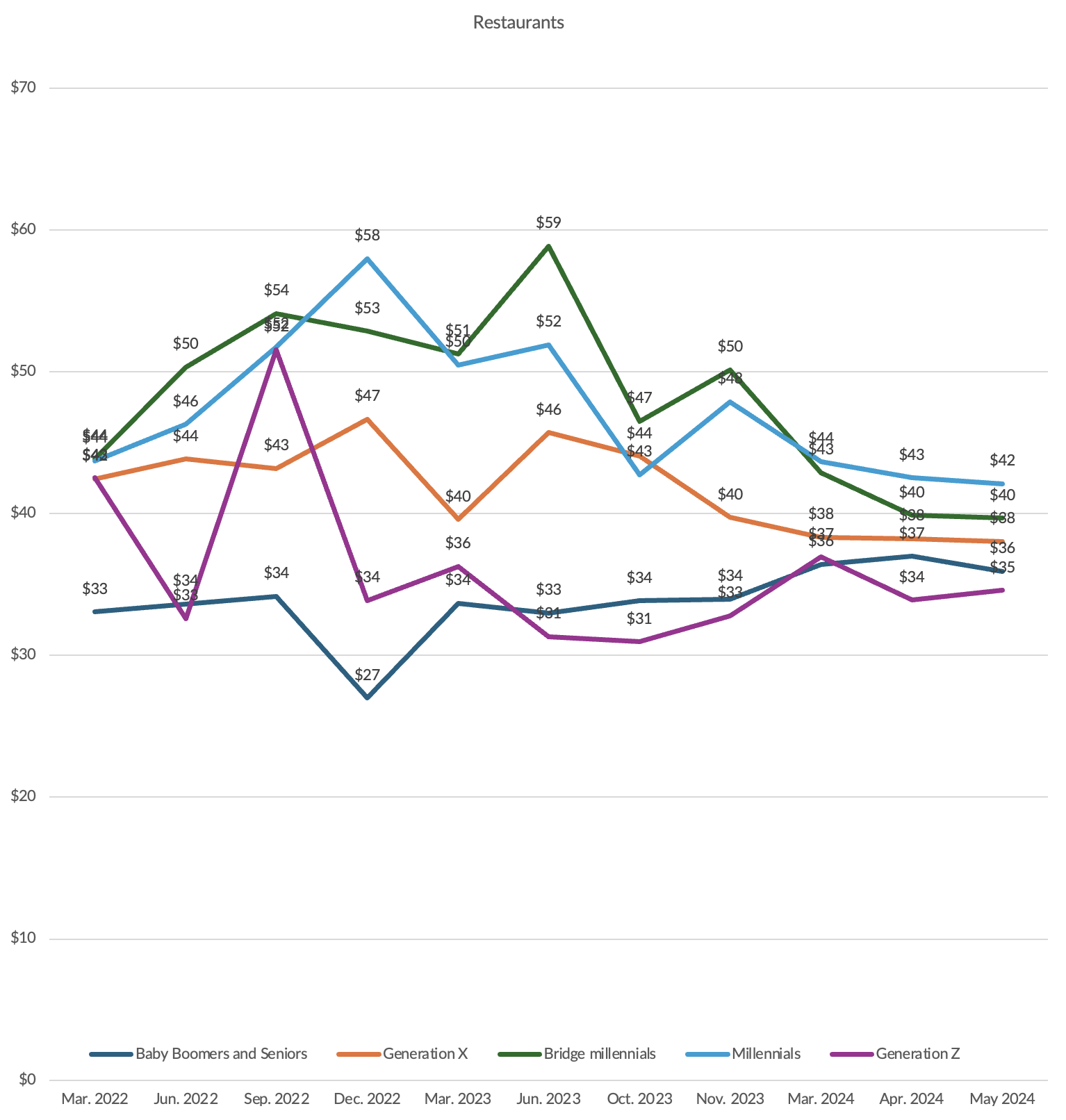
After years of the youngest consumers shelling out for restaurant meals considerably more than the oldest, the balance has shifted.
A PYMNTS Intelligence study in May for the “Last Transaction Report” series surveyed more than 2,700 United States consumers about their recent purchases. The results illuminated the generational trends in restaurant check sizes over time.
Back in March 2022, the earliest period included in the study, baby boomers and seniors were spending $33 on their average restaurant purchase, while Generation Z consumers were spending 30% more than that, $43. Yet by this past May, baby boomers and seniors were averaging a slightly higher $35, while Gen Z per-purchase spending dropped by 21% to $34.
In the same period, Generation X average spending per restaurant purchase decreased from $42 to $36, millennial spending dipped slightly from $44 to $42, and bridge millennial spending has fallen from $44 to $40.

The generational dynamics of restaurant spending have undergone a significant shift. After years of younger consumers leading the way in restaurant spending, there has been a notable decline in their average per-visit expenditure. Conversely, older consumers, specifically baby boomers and seniors, have increased their spending, narrowing the gap and in some cases surpassing younger generations.
Notably, while younger generations may be spending less per visit, older consumers might be pulling back more overall, such that younger consumers’ overall restaurant spending may be decreasing less, even as average check decreases more.
A 2022 PYMNTS Intelligence study found that baby boomers and seniors are the most likely to purchase from restaurants less often in the face of inflation, while millennials and Gen Z consumers are the most likely to switch to restaurants with lower prices, and millennials and bridge millennials are the most likely to choose cheaper items from the menu and decrease the amount of food per order.